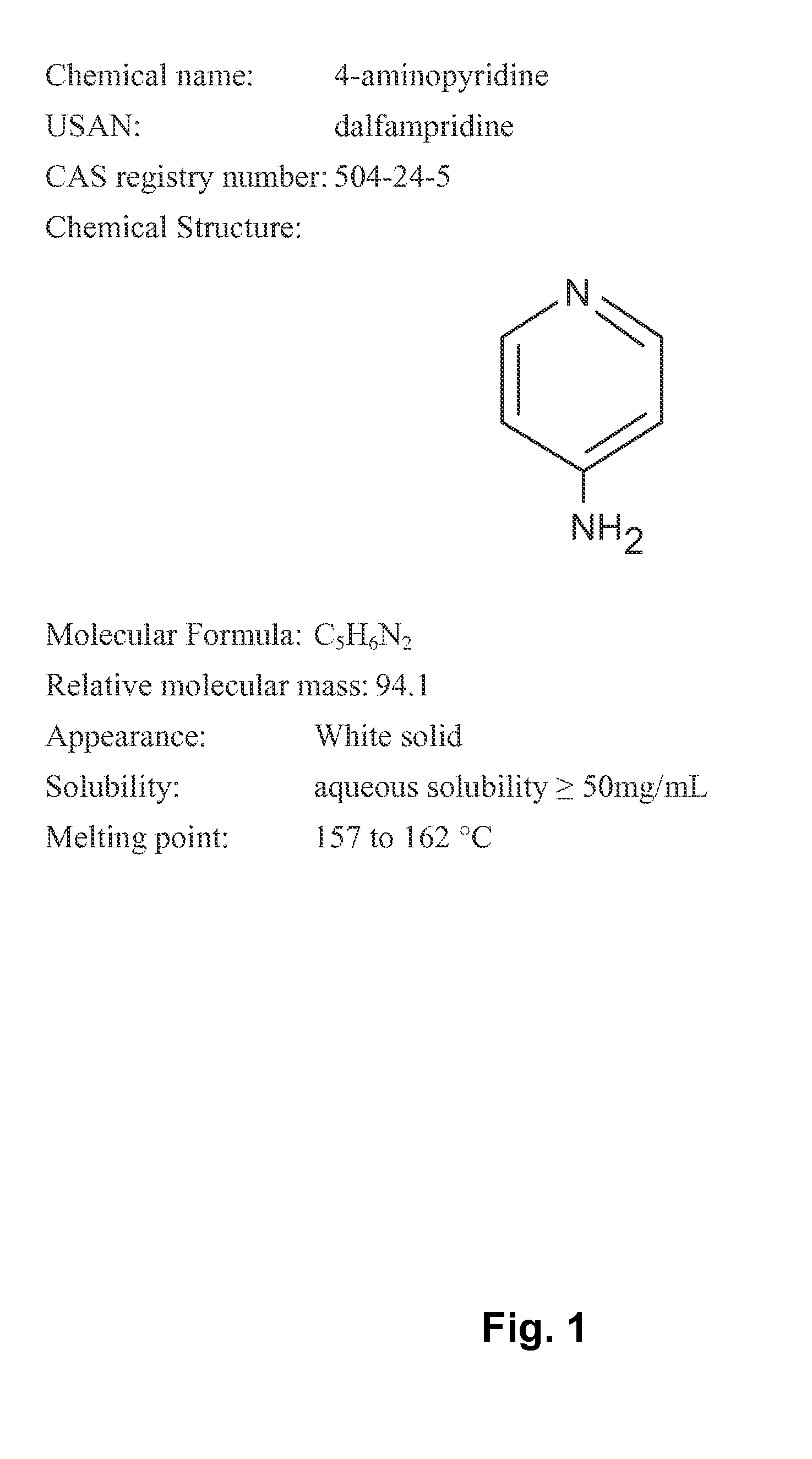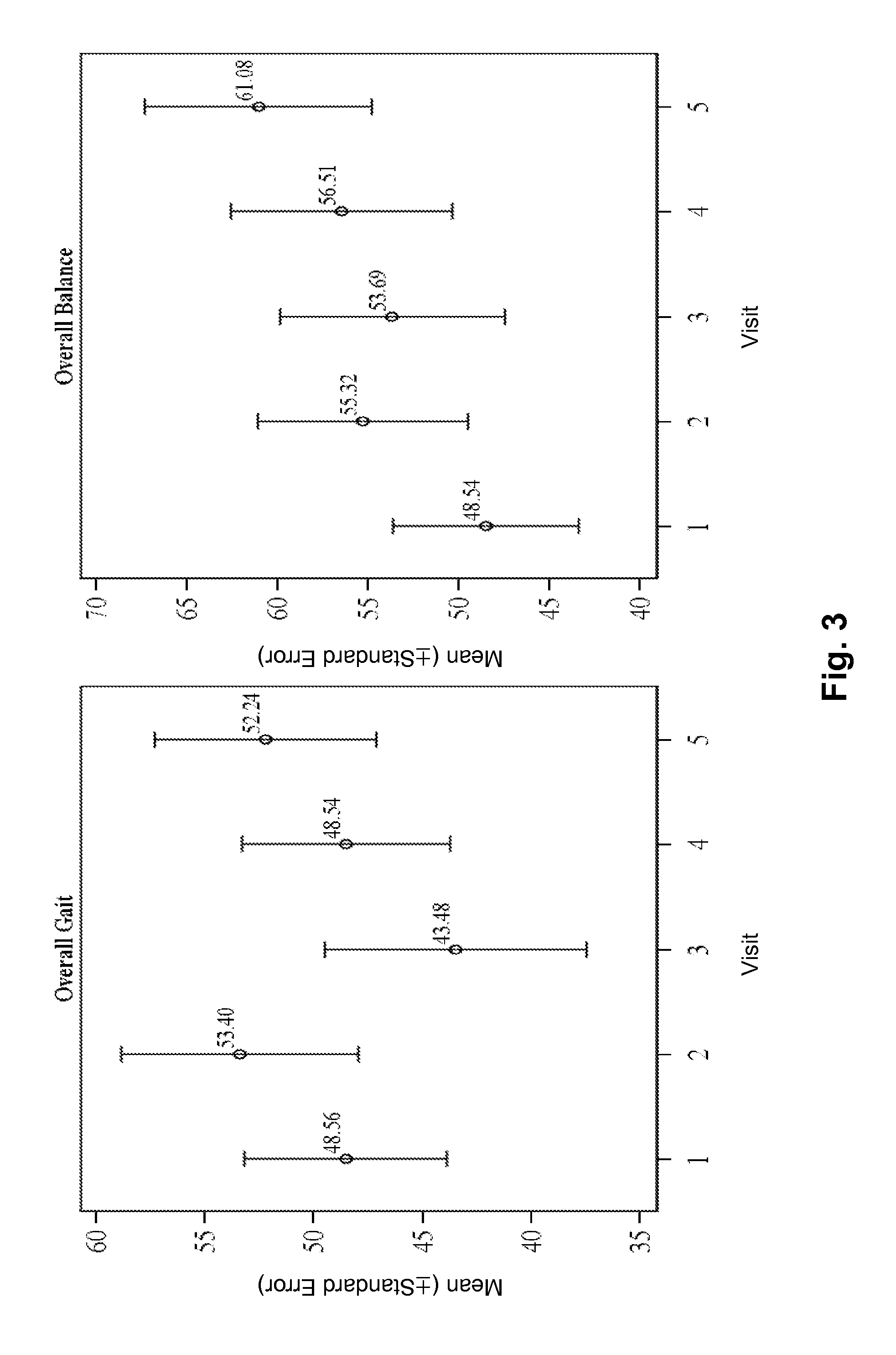Methods for treating an impairment in gait and/or balance in patients with multiple sclerosis using an aminopyridine
- Summary
- Abstract
- Description
- Claims
- Application Information
AI Technical Summary
Benefits of technology
Problems solved by technology
Method used
Image
Examples
example 1
6.1 Example 1
A Study Evaluating the Effects of Dalfampridine on Gait and Balance Parameters in Subjects with Multiple Sclerosis (MS)
6.1.1 List of Abbreviations
[0107]The following abbreviations and specialist terms are used in this study protocol (see Table 1).
TABLE 1Abbreviations and Specialist TermsAbbreviation orSpecialist TermExplanation2MWTTwo Minute Walk testADTAdaptation TestAEAdverse eventBBSBerg's Balance ScaleCCelsiusCFRCode of Federal RegulationsCNSCentral nervous systemCOGCenter of GravityCrClCreatinine clearanceCRFCase Report FormDCLDirectional ControlECEyes ClosedEOEyes OpenEMAEuropean Medicines AgencyEPEEndpoint ExcursionERExtended releaseFFahrenheitFAPFull Analysis PopulationFDAFood and Drug AdministrationGCPGood Clinical PracticesICHInternational Conference on HarmonizationIRBInstitutional Review BoardKgKilogramLOSLimits of Stability TestMMeterMgMilligramMSMultiple sclerosisMVLMovement VelocityMXEMaximum ExcursionNDCNational Drug CodeNeuroCom orNeuroCom SMART Balance...
example 2
6.2 Example 2
A Study Using NeuroCom SMART Balance Master®, Berg Balance Scale, 2MWT and T25FW to Evaluate the Effects of Dalfampridine on Gait and Balance Parameters in Subjects with Multiple Sclerosis (MS)
6.2.1 List of Abbreviations
[0286]Refer to Table 1 in Example 1, section 6.1.1, for the abbreviations used in this study protocol.
6.2.2 Study Objectives
[0287]The objectives for this study were the same as those described in Example 1, section 6.1.2.
6.2.3 Investigational Plan
[0288]For this study, the investigational plan was essentially the same as described in Example 1, section 6.1.3. Brief description of the study schedule is presented below[0289]Tests were administered at every study visit. The study was subdivided into three study periods as follows:[0290]Period 1 (the first on-drug period lasting 1 week): All eligible subjects were being treated with Dalfampridine-ER for at least two weeks at the start of the study and were considered to be Improvers based on treatment, per th...
example 3
6.3 Example 3
Detailed Description of the Study to Evaluate the Effects of Dalfampridine on Gait and Balance Parameters in Subjects with Multiple Sclerosis (MS) Presented in Example 2
[0331]This example provides a more detailed description of the experimental design of the study presented in Example 2 and the data obtained therein.
6.3.1 List of Abbreviations
[0332]The following abbreviations and specialist terms are used in this study protocol (see Table 11).
TABLE 11Abbreviations and Specialist TermsAbbreviation or Specialist TermExplanation2MWT2-minute Walk TestADTAdaptation TestAEAdverse eventANOVAAnalysis of VarianceBBSBerg's Balance ScaleBMIBody Mass IndexCFRCode of Federal RegulationscmCentimeterCOGCenter of gravityCRAClinical Research AssociateCRFCase Report FormCROContract Research OrganizationdegDegreeD-ERDalfampridine extended releaseERExtended releaseFAPFull Analysis PopulationFDAFood and Drug AdministrationftFeetGCPGood Clinical PracticeICFInformed Consent FormICHInternation...
PUM
 Login to View More
Login to View More Abstract
Description
Claims
Application Information
 Login to View More
Login to View More - R&D
- Intellectual Property
- Life Sciences
- Materials
- Tech Scout
- Unparalleled Data Quality
- Higher Quality Content
- 60% Fewer Hallucinations
Browse by: Latest US Patents, China's latest patents, Technical Efficacy Thesaurus, Application Domain, Technology Topic, Popular Technical Reports.
© 2025 PatSnap. All rights reserved.Legal|Privacy policy|Modern Slavery Act Transparency Statement|Sitemap|About US| Contact US: help@patsnap.com



